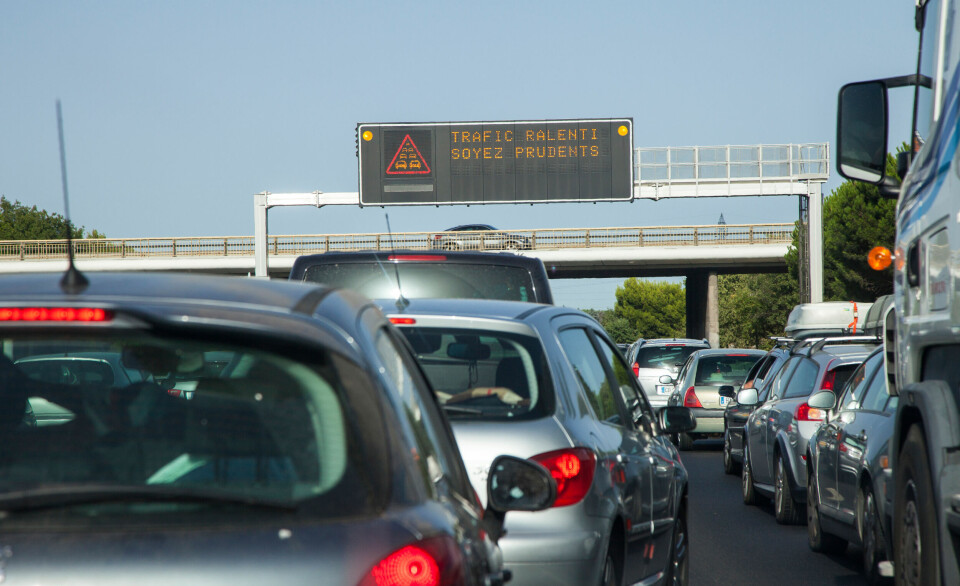-
SFR customers in France warned to be vigilant following cyberattack
Data from potentially millions of customers were taken following data breach
-
Festive travel reminder for residency card holders as new border checks expand in France
The EU’s Entry/Exit System is being rolled out progressively
-
Road blockades by farmers continue on Monday despite call for Christmas truce
A meeting between local union leaders and officials in Toulouse will determine pre-Christmas blockades
Covid levels rising in over 50% of used water test sites in France
Larger increases have been observed in Lille, Bordeaux and the Ile-de-France region. Figures are now awaited from an October 29 analysis to understand better the trend

Covid levels in used water have risen in 50% of sites across a French water testing network, suggesting the virus is spreading again, a co-founder of the tracking system has said.
Water network Obépine has 200 used water purification stations covering around 33% of the population in France, particularly in large cities, and has been testing for Covid.
System co-founder Yvon Maday told BFMTV today (October 29): “In more than half of stations, levels are going up, gently in stations where the circulation level was relatively low and more significantly in other stations.”
Larger increases have been observed in the cities of Lille and Bordeaux, and the Ile-de-France region, but the figures do not yet paint a clear picture of how the virus may be spreading.
“We are waiting for results from the night of Friday, October 29 to have real confirmation of what is happening, but we have seen a change in trends for two or three weeks,” Mr Maday said.
Fellow co-founder of Obépine, professor of virology Vincent Maréchal, told BFMTV that the increase was not surprising in the context of the return of colder weather in France.
“Since the end of September or beginning of October in around half of our purification stations, we have seen that either levels have stopped decreasing or there has been a light increase…that could signal the virus is circulating again,” he said.
Covid testing decreases as fees introduced
Used water testing may become one of the main ways to track the spread of the virus as fewer people are taking Covid tests since fees were introduced on October 15.
In the week of October 18-24, there was a reduction of 675,200 tests being taken among 16-65 year-olds compared with the previous week, national statistics body Drees reported.
In this context, l'Académie nationale de médecine released a statement on October 13 urging the government to issue funding for Obépine, to enable it to continue its research, ahead of the introduction of a national water testing system with more complete coverage.
Covid advisory body Le Conseil scientifique said that an advantage of used water testing was that it shows any increases in viral circulation before other epidemiological indicators, such as the number of daily cases, or the incidence rate (the number of cases per 100,000 people in the past seven days).
However, both of these measures have also been increasing gently in recent weeks. The national incidence rate rose from 43.8 to 55.9 between October 15 and October 25.
The latest figures show that 6,528 daily cases were recorded on October 27.
The start of a new wave?
Mr Maday said it was difficult to predict whether the increase in circulation signalled the start of a new wave of the virus in France.
“The virus has mutated, and the population has changed because it is vaccinated,” he said. This makes it impossible to compare current data with that from one year ago, he said.
However, he added that it would be sensible for the government to use the information to make decisions now, “in order to avoid finding ourselves in a complicated situation in hospitals” in future.
The number of Covid patients in hospitals in France is relatively low at the moment.
On October 28, Santé publique France reported that there had been 1,569 new Covid patients admitted to hospital in the past seven days, including 418 admissions to intensive care.
That’s an increase of 12% on last week, prompting Vincent Maréchal, professor of virology at the Sorbonne to tell Le Monde that: “This will not be a winter without Covid-19.”
The increase in hospitalisations is partly down to the fact that there is still a significant proportion of older people who are still not vaccinated.
Some 2.5 million over-50s and 500,000 over-80s are still yet to receive their vaccines, but these age groups are more likely to fall seriously ill with the disease.
As of yesterday (October 28), one third of intensive care beds were occupied by 60 to 69-year-olds.
In addition, only 64% of fully vaccinated over-65s not living in care homes had taken up their booster jab invitation by October 24, making them more vulnerable to the vaccines’ gradual decline in efficacy.
On Wednesday (October 27), government spokesperson Gabriel Attal confirmed a “slight but noticeable rise” in infection rates, with around 40 departments now having tipped over the seuil d’alerte threshold of 50 cases per 100,000 people.
The rates may still appear to be low, but in reality they could well be higher, as fewer people are choosing to get tested since tests became payable on October 15.
In addition, the presence of other winter colds and bugs may be persuading people who are Covid-positive to believe that they are in fact suffering from another illness, especially as the Delta variant can often cause a headache, runny nose and sneezing.
Related stories
French health minister has Covid booster: what plans for wider public?
Hospital beds ‘closed’ in France due to lack of workers
New antiviral Covid pill to be reviewed by EU medicines agency
























